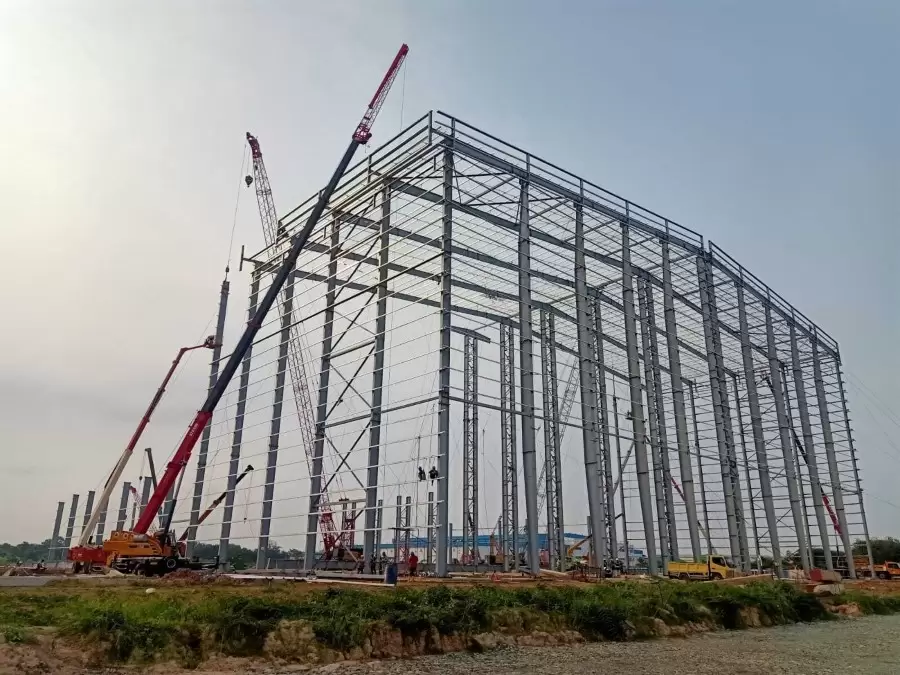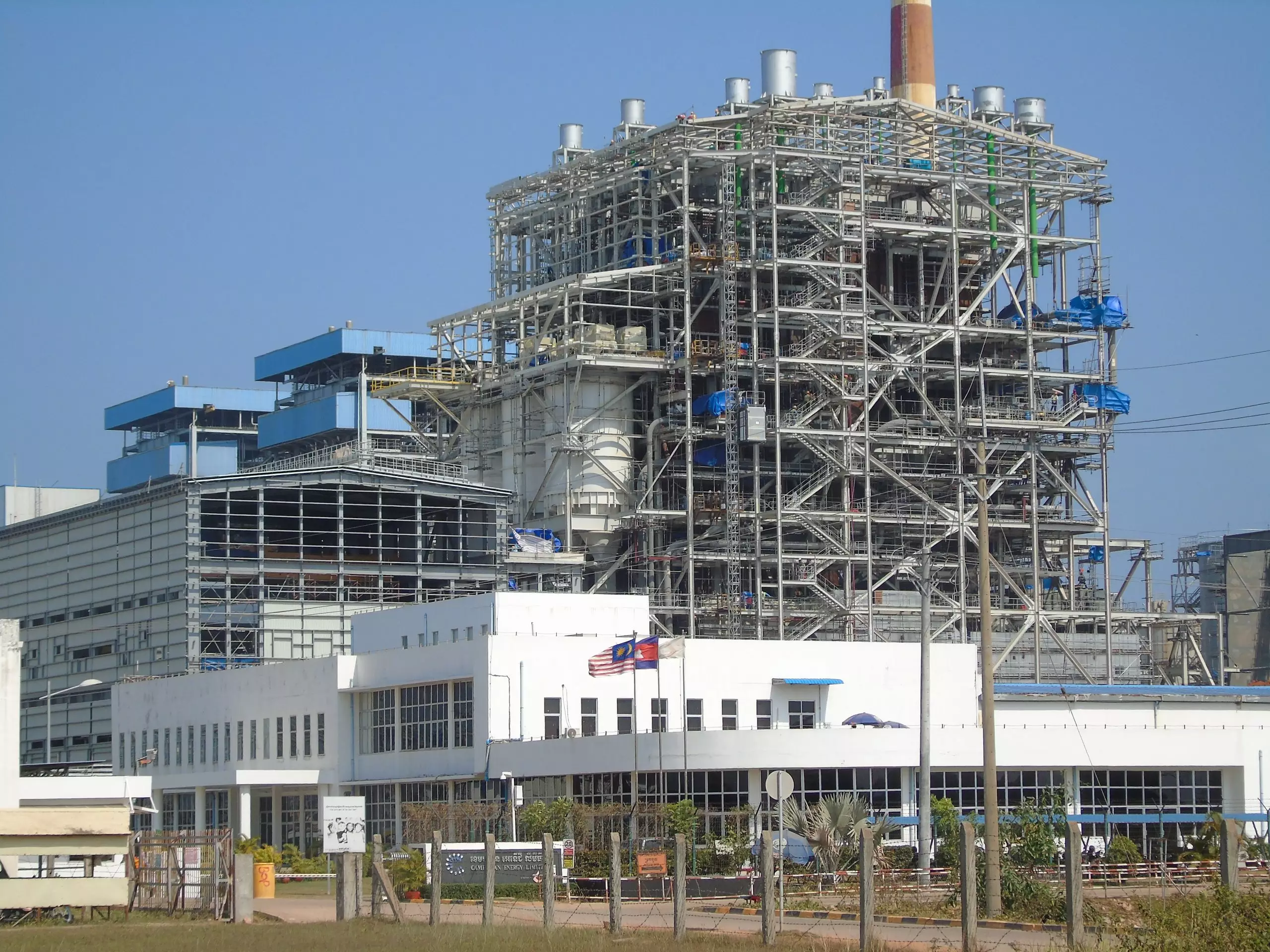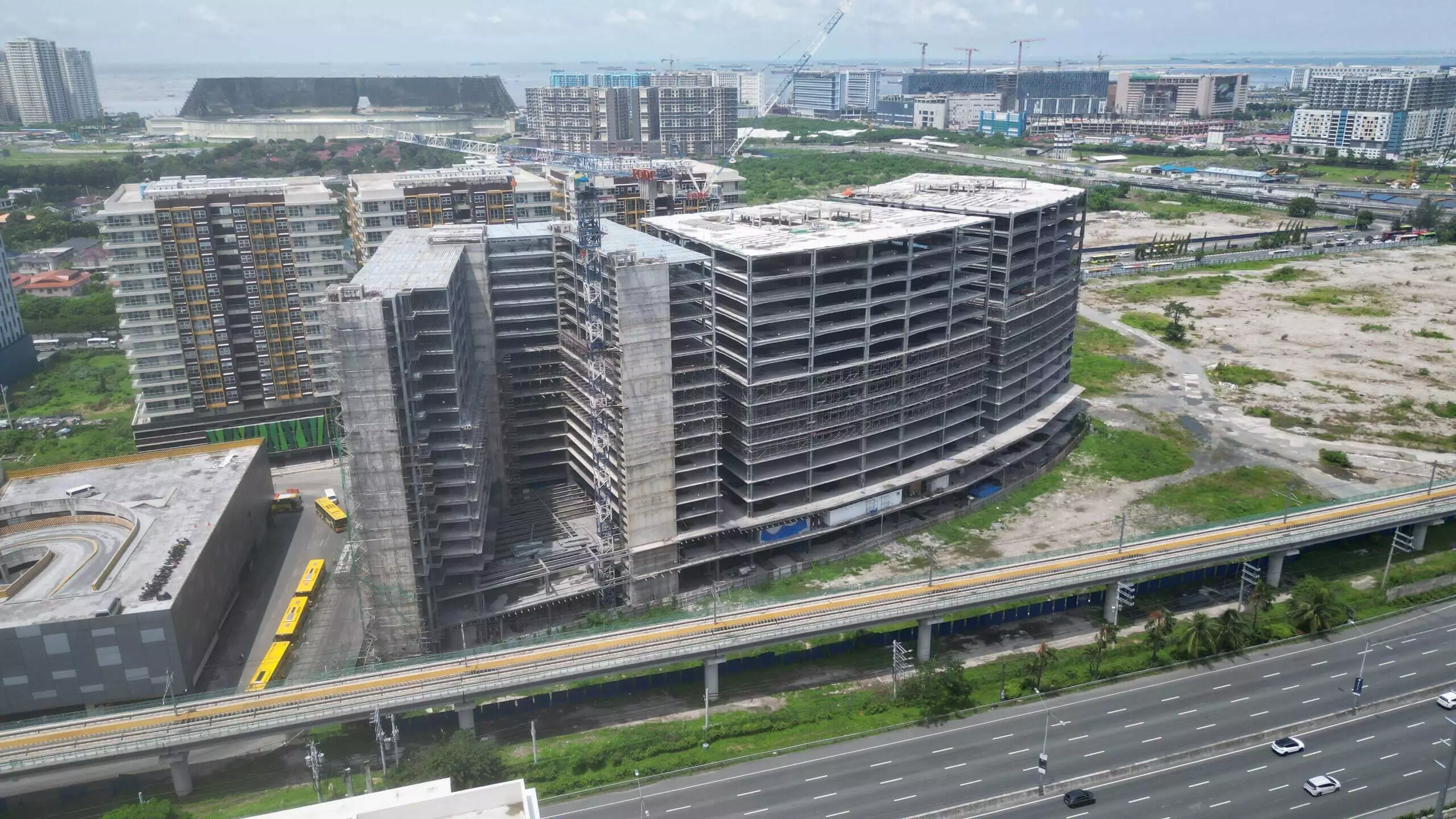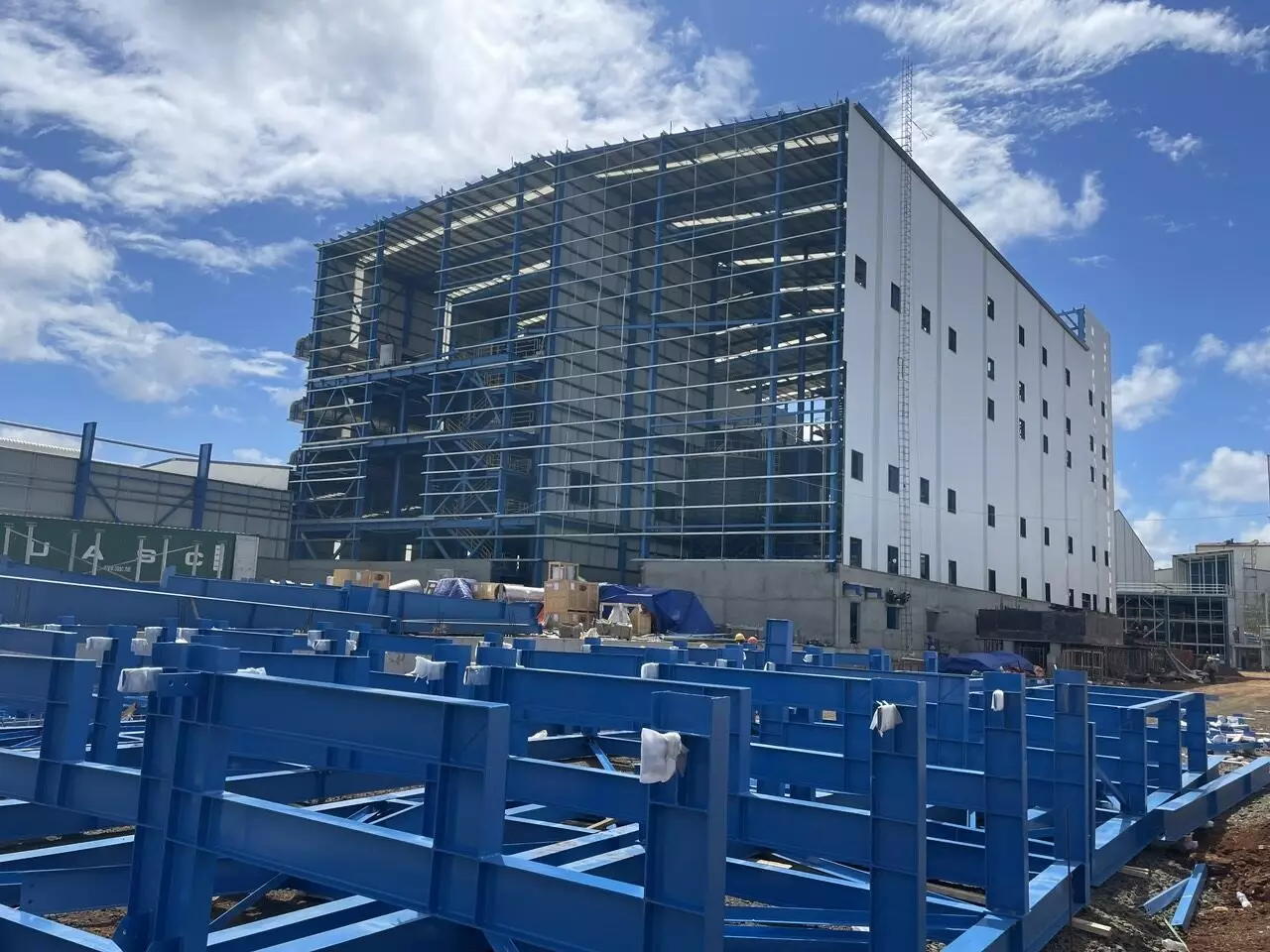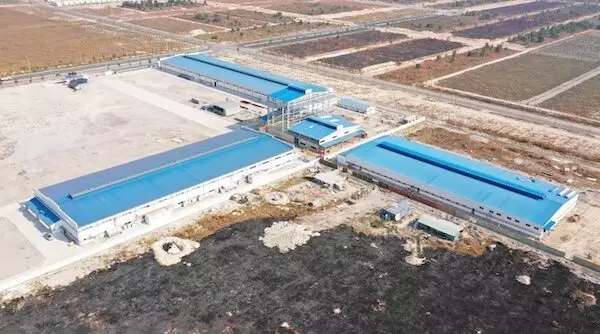Nowadays, many investors choose steel structure for their building construction projects. The biggest reason why businesses choose this type of structure is because of its solidity and ability to construct quickly. Cost-related issues are also considered by businesses to make the final decision. In the following article, you will learn about the steel structure with Pebsteel: What types of steel structures are there, what are their properties, and what should be noted in the process of building a steel building?
1. What is a Steel structure?
Steel structure is the essential component in various types of construction projects, characterized by their robust steel composition and distinctive shapes.
This steel material complies with specified standards for chemical composition and proper strength. The demand for the construction of steel building is increasing and is used in many projects such as bridges, stadiums, warehouses, industrial facilities, and other infrastructure projects.
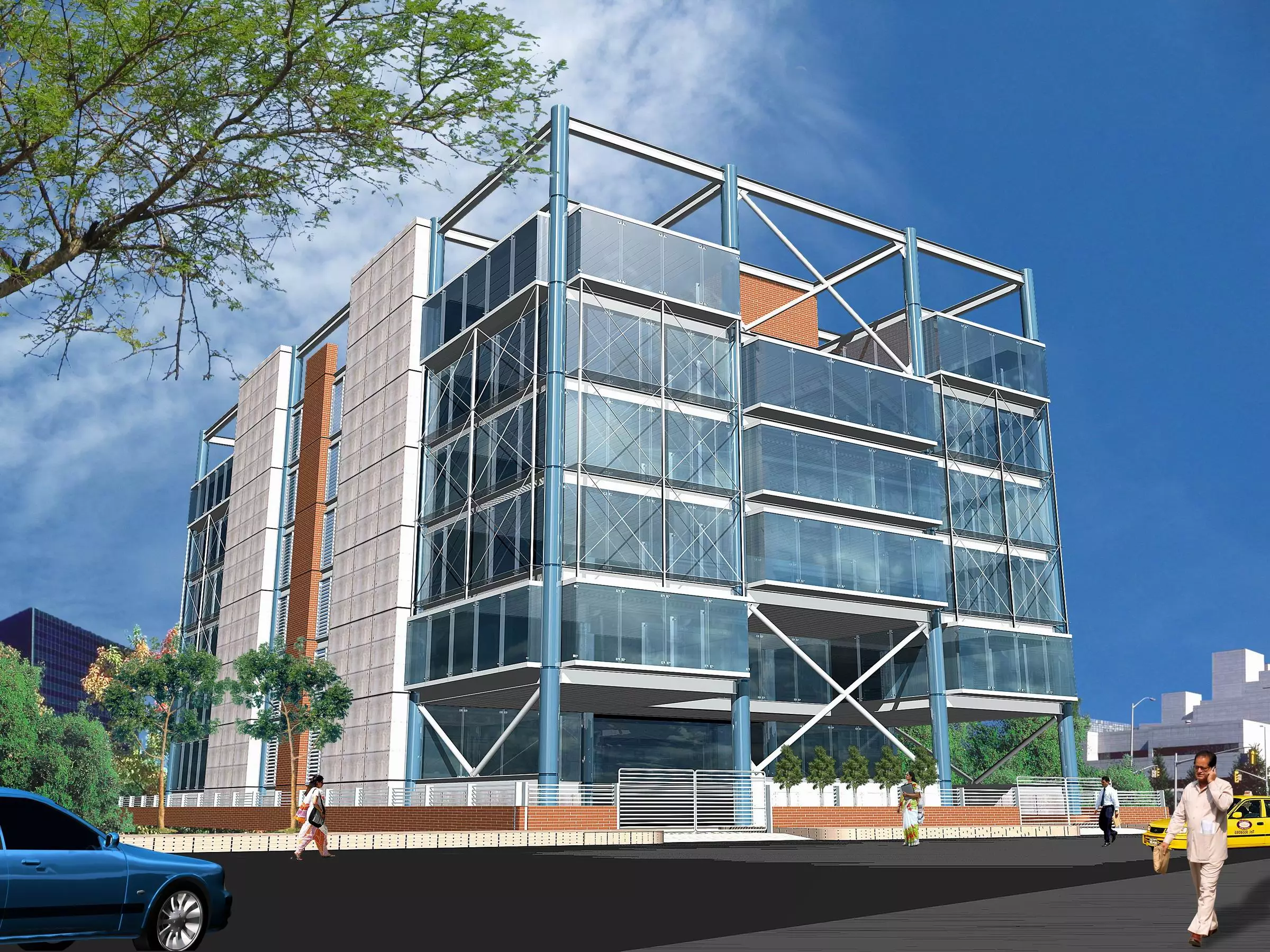
Based on the project’s unique specifications, the steel components can assume various shapes, dimensions, and thicknesses, produced through hot or cold rolling processes. In contrast, others are created by welding flat or curved plates together. Steel structures typically feature shapes such as I-beams, hollow structural sections (HSS), channels, angles, and plates.
2. Main types of steel structure
The main type of steel structure are the frame structure, the truss structure, the grid structure, the arch structure, and the portal rigid steel frame.
Additionally, steel structure has a steel arch structure, arch bridge, beam bridge, cable-stayed bridge, and suspension bridge. Each type has its unique advantages and applications, making steel a versatile material in construction.
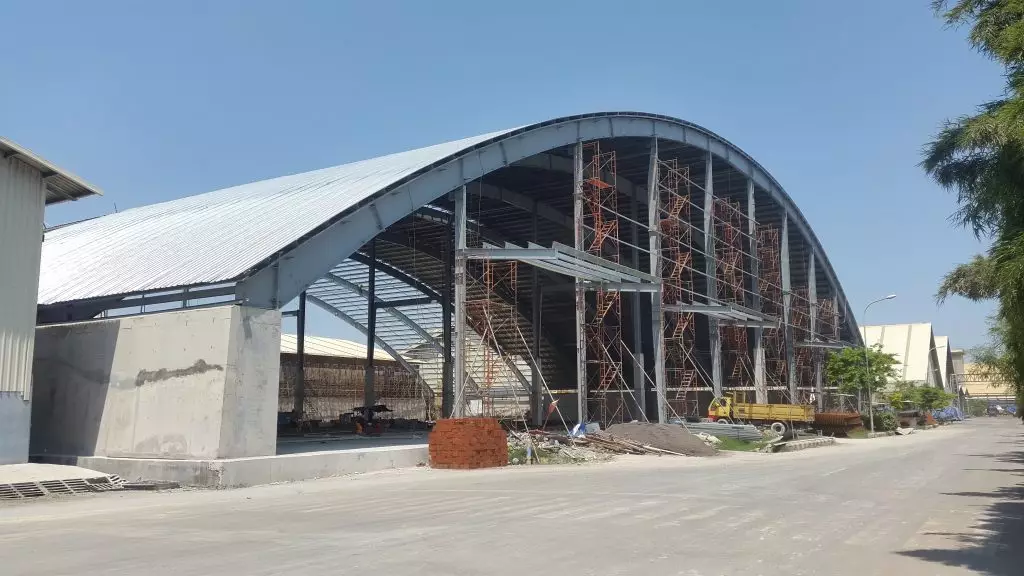
3. Advantages and disadvantages of steel structure in construction
Steel structure is a popular and reliable choice for a wide range of construction projects due to their structural integrity, from commercial and industrial buildings to bridges and other infrastructure developments.
Advantages
- Steel has a high strength-to-weight ratio, which is very strong for its weight, and is much higher than other common construction materials, such as concrete and wood. This means that steel components (using structural steel) can be made very lightweight without sacrificing strength.
- Ductile steel structures can absorb more energy before failure than brittle structures. This makes them ideal for applications subjected to high-impact loads, such as in earthquake-prone areas or industrial settings.
- Prefabrication and ease of assembly of steel structures lead to faster construction times.
- The steel structure is recyclable, making it an environmentally friendly choice.
- Low maintenance requirements of steel structures contribute to long-term cost efficiency.
- Steel fabrication can be easily modified or expanded.
- Properly designed steel structures can provide high fire resistance.
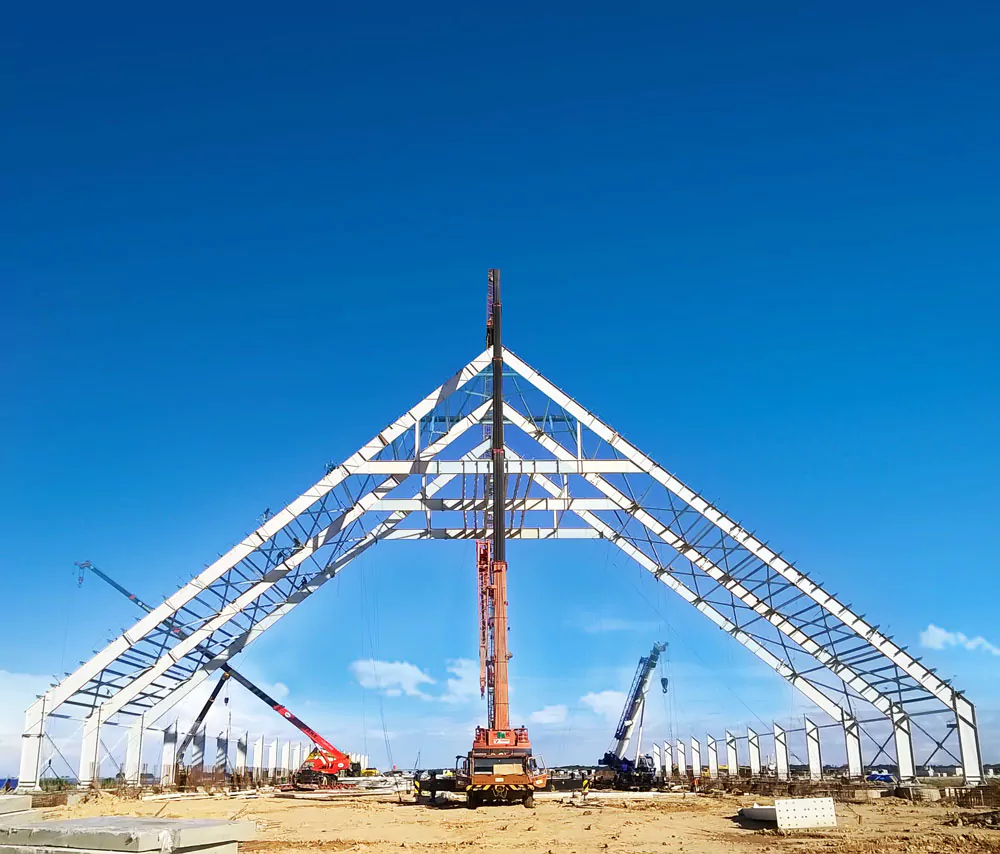
Disadvantages
- Thin steel frames may not be suitable for buildings that require high load-bearing capacity or long spans, as they might not provide sufficient strength.
- Steel is susceptible to corrosion, so steel structures need to be properly protected from the elements. This can add to the cost of maintenance and upkeep.
- Steel is a good conductor of heat, meaning steel structures can be hot in the summer and cold in the winter. This can make them less comfortable to occupy and can also increase energy costs.
Read more: Bolt Connections In Steel Structure
4. Steel structure properties
Steel is an alloy composed of iron and carbon, and its specific properties can be adjusted by adding various elements such as manganese, sulfur, copper, phosphorus, chromium, and nickel. Therefore, steel structure properties depend on its chemical components.
The influence of different chemical components on steel is as follows:
- Increasing the carbon and manganese content will enhance tensile strength and yield strength but reduce ductility and make it less weldable.
- If the sulfur and phosphorus content exceeds a certain percentage, it will create brittleness, affecting weldability and fatigue strength.
- Chromium and nickel content contribute to the corrosion resistance of steel and can also improve its high-temperature resistance.
- Corrosion resistance can be further enhanced by adding copper.
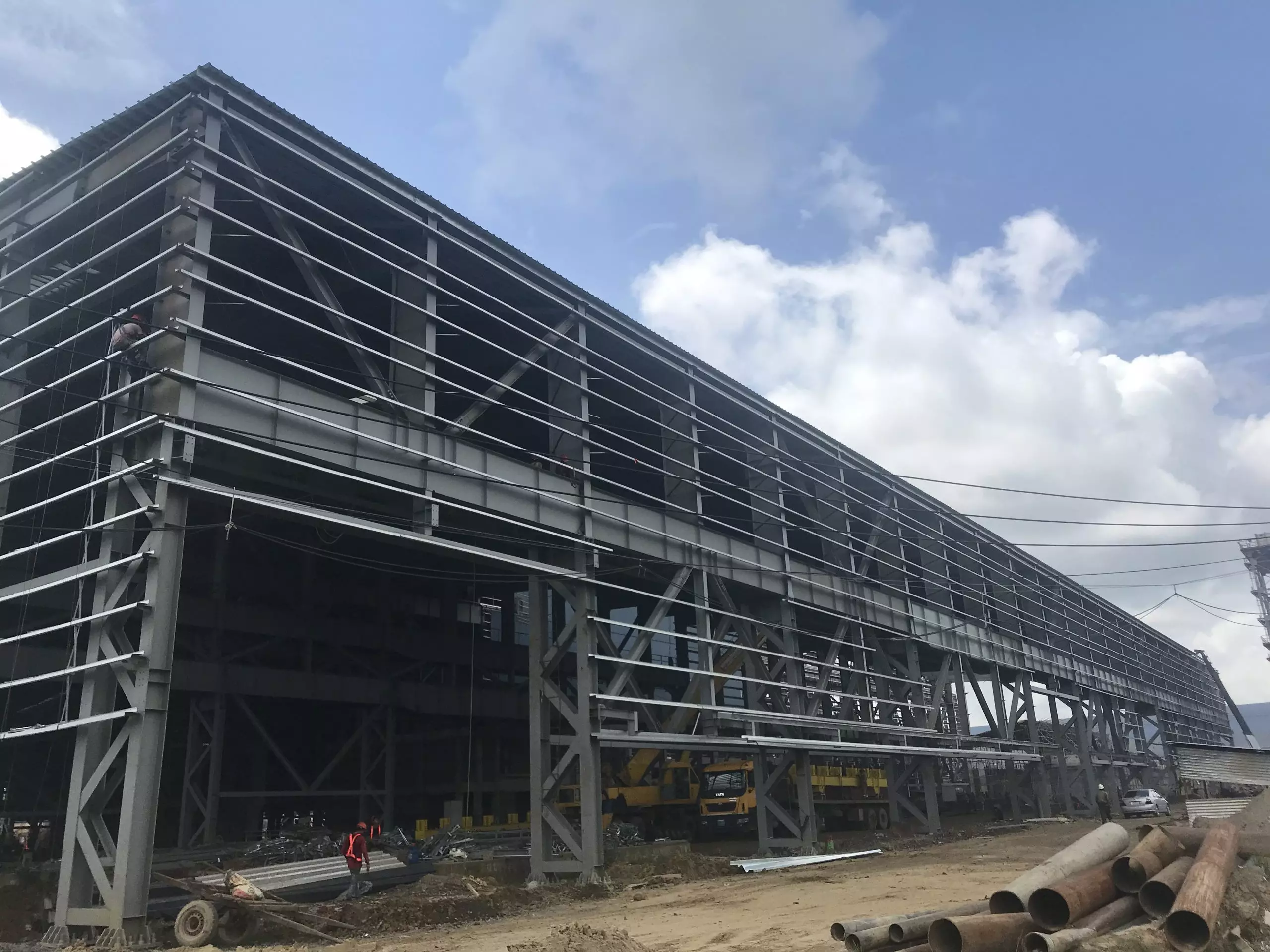
Minor changes in chemical composition can result in various types of steel. These types of steel are used to construct structural components such as pipes, plates, conduits, bolts, rivets, reinforcing bars, and more.
Heat treatment and alloying processes are employed in steel production to achieve different properties and strengths:
- Tensile strength: The stress-strain curve of steel is typically obtained by conducting tensile tests on any standard steel sample. The tensile strength can be determined based on yield strength and ultimate strength.
- Hardness: Hardness is considered the resistance to indentation and scratching of any material. Different methods to measure the hardness of metals include Brinell hardness testing, Vickers hardness testing, and Rockwell hardness testing.
- Toughness of notches: It is the ability to develop very small cracks in the material or materials that can develop such cracks due to several load cycles. These cracks can lead to sudden structure collapse and are very dangerous. Therefore, to ensure this does not happen, preference should be given to materials with slow crack propagation. These types of steel are called high-strength steel, and the amount of energy it absorbs is measured by impacting a notched sample.
- Fatigue strength: A part of the steel structure building designed to withstand a single static load may fail if that load acts in cycles with a large number.
- Corrosion resistance: Metal corrosion is a natural phenomenon that occurs rapidly in places with high humidity and near salt water. Therefore, efforts have been made to control corrosion using galvanized steel bars and epoxy coatings. Still, they have failed in practical use due to the risk of dispersion and rapid corrosion. Anti-corrosion elements such as copper, phosphorus, and chromium added improperly to the metal will create corrosion-resistant steel.
- Rolled steel: Like concrete, steel parts of any shape and size cannot be cast in place because steel requires very high temperatures to melt and be rolled into the required shape. Rolled steel parts, including steel columns, beams, channels, rectangular hollow sections, circular hollow sections, single angles, tees, double angles, and pre-fabricated steel building parts, are produced in steel mills and brought to the market.
Read more: Is Steel Structure Better Than Concrete?
5. Steel structure standards in Vietnam
The standards of steel structures are intended to determine the quality of steel structures used for construction. For example, the constructions must meet the standards of Vietnam, Australia, the USA, the UK, and Europe.
Once the standards have been identified, this will be the basis for constructing, controlling, and accepting steel structure constructions. Currently, the standard of steel structure is the national standard TCVN 5575: 2012.
This standard has the following features:
- Originating from Russia with the code SNIP II -23 – 81, compiled by the Institute of Construction Science and Technology – Ministry of Construction, Ministry of Construction proposed, General Department of Standards and Quality appraisal, Ministry of Science and Technology announced.
- As the National Standard as prescribed in Clause 1, Article 69 of the Law on Standards and Technical Regulations and Point B, Clause 2, Article 7 of the Government’s Decree No. 127/2007/ND-CP on August 1st, 2007 detailing the implementation of several articles of the Law on Standards and Technical Regulations.
- Applicable to steel structure design of civil and industrial constructions; not used to design transport and irrigation constructions such as bridges, road constructions, valve doors, pipes,…
- TCVN 5575: in 2012, apply the restricted state method with safety coefficients for load, materials, working conditions …
- TCVN 5575: in 2012, it focused on hardness and did not accept the deformation of the structure’s shape.
- TCVN 5575: in 2012, apply the formula:
- Calculation intensity = standard intensity/material safety coefficient.
- Calculation load = standard load/overlay factor (load reliability coefficient)
If the steel structure has many effective loads, add the simultaneous load reduction coefficient of the loads.
Read more: Erection of Steel Structures
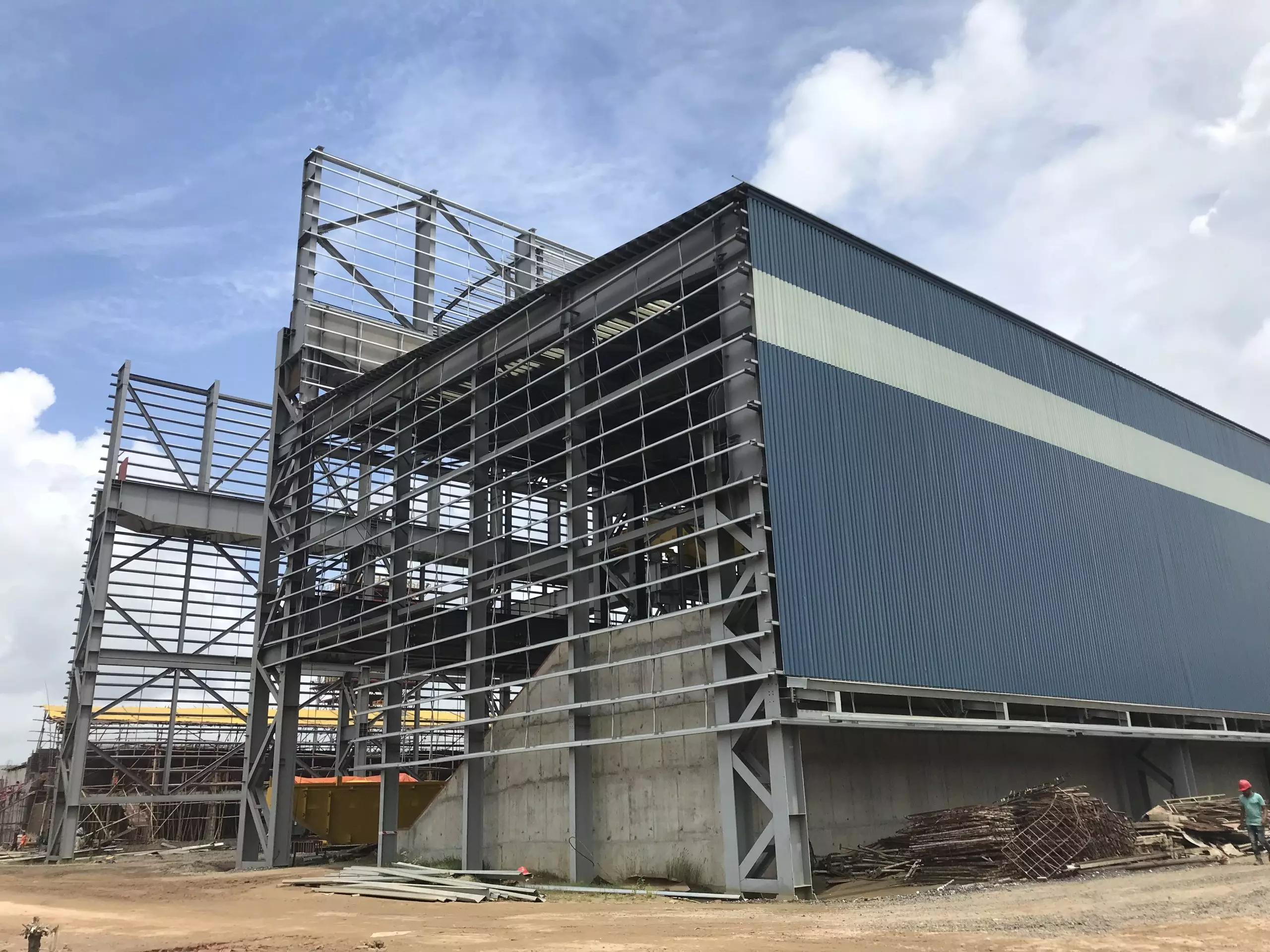
TCVN 5575: in 2012, it was used as a calculated load for steel structures with specific regulations for wind coefficient, aerodynamic coefficient, etc.
Standards for construction of steel structures at Pebsteel
At Pebsteel, steel structure construction standards follow the latest design (also applied to structural steel design) and construction standards.
- Welding Standard – AWS.
- Load Standard – ASCE.
- Cold Rolled Steel Design Standard – AISI.
- Steel structural design standard – AISC.
These standards have contributed to Pebsteel’s creation of international-quality steel buildings.
6. Applications of steel structure
Steel structure is a versatile and durable material that is used in a wide variety of applications. It is strong, lightweight, and relatively easy to work with, making it a popular choice for many different types of construction projects:
- Steel beams (such as I beams)
- Steel frame buildings
- Steel railings
- Steel gates
- Staircases
- Lintel beams
- Parallel flange channels
- Flitch plates
Steel structure is used in a wide variety of applications, including:
- Buildings: Steel structure is used to construct the frames of all types of buildings, from tiny residential homes to large commercial skyscrapers.
- Bridges: Steel structure is the primary material used to build bridges of all sizes, from small footbridges to large multi-span bridges.
- Other infrastructure: Steel structure is also used to build other types of infrastructure, such as roads, railways, and power lines.
- Industrial structures: Steel structure is used to build various industrial structures, such as factories, warehouses, and power plants.
- Ships and other vessels: Steel structure is the primary material used to build ships and other vessels, such as boats, barges, and oil rigs.
7. Steel structure construction process

Pebsteel’s standard process for providing prefabricated steel buildings and steel structures consists of 7 steps:
Step 1: Brainstorming
Based on the customer’s requirements, Pebsteel will propose implementation ideas that ensure professionalism and suit the actual situation. This is the first phase that Pebsteel approaches the project. Therefore, to ensure that the ideas are close to the needs, it is extremely important to learn information and understand the needs of customers.
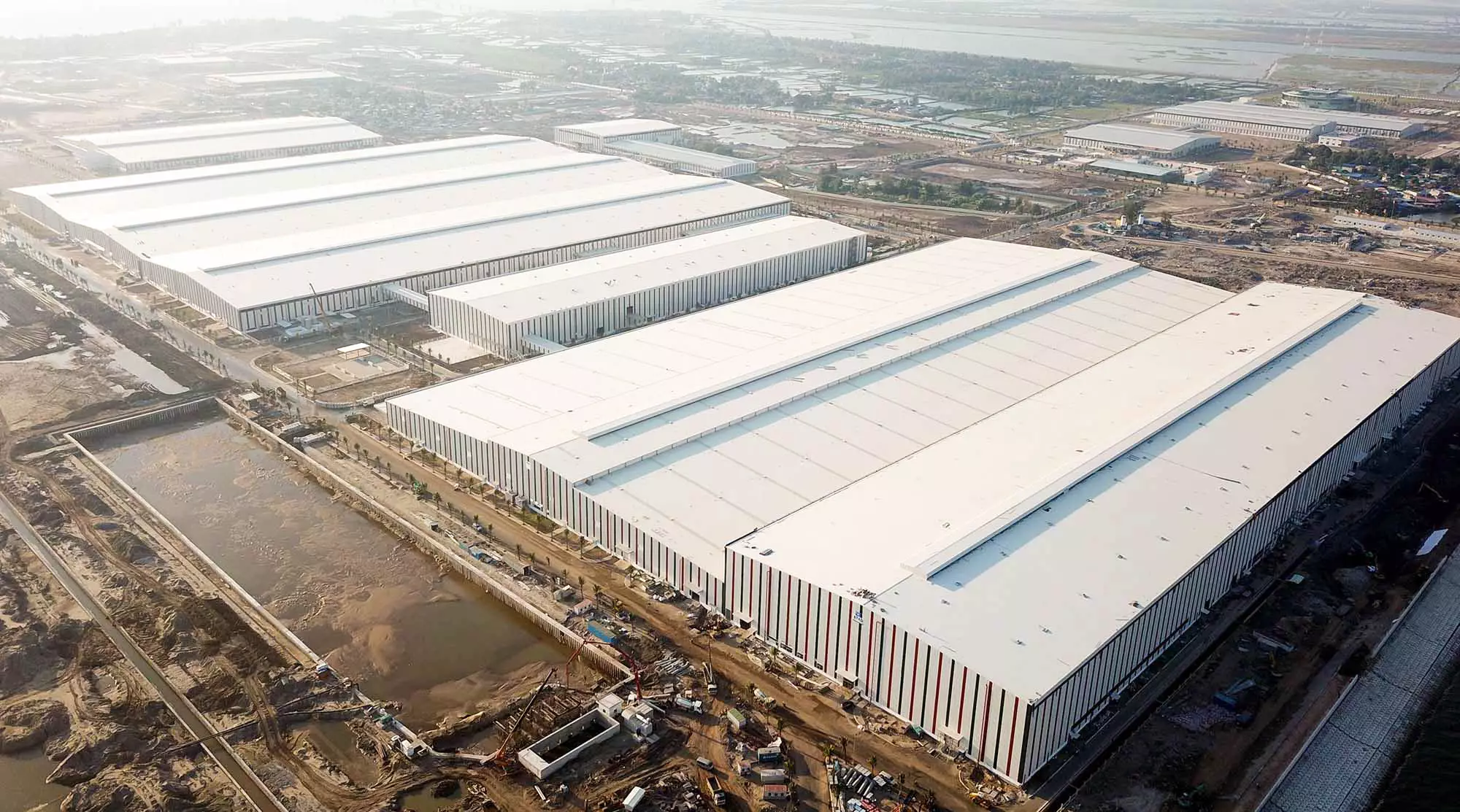
Step 2: Proposing a solution
After proposing the idea, Pebsteel proceeded to propose further solutions to realize the approved ideas. The proposed solutions are detailed with the following categories:
- Design
- Manufacturing – fabrication
- Installation
- Cost
- Implementation time

Step 3: Signing a contract and implementing the project
After the Idea and Solution Section is approved by the customer, Pebsteel proceeds to signing the contract and implementing the project according to the agreement.
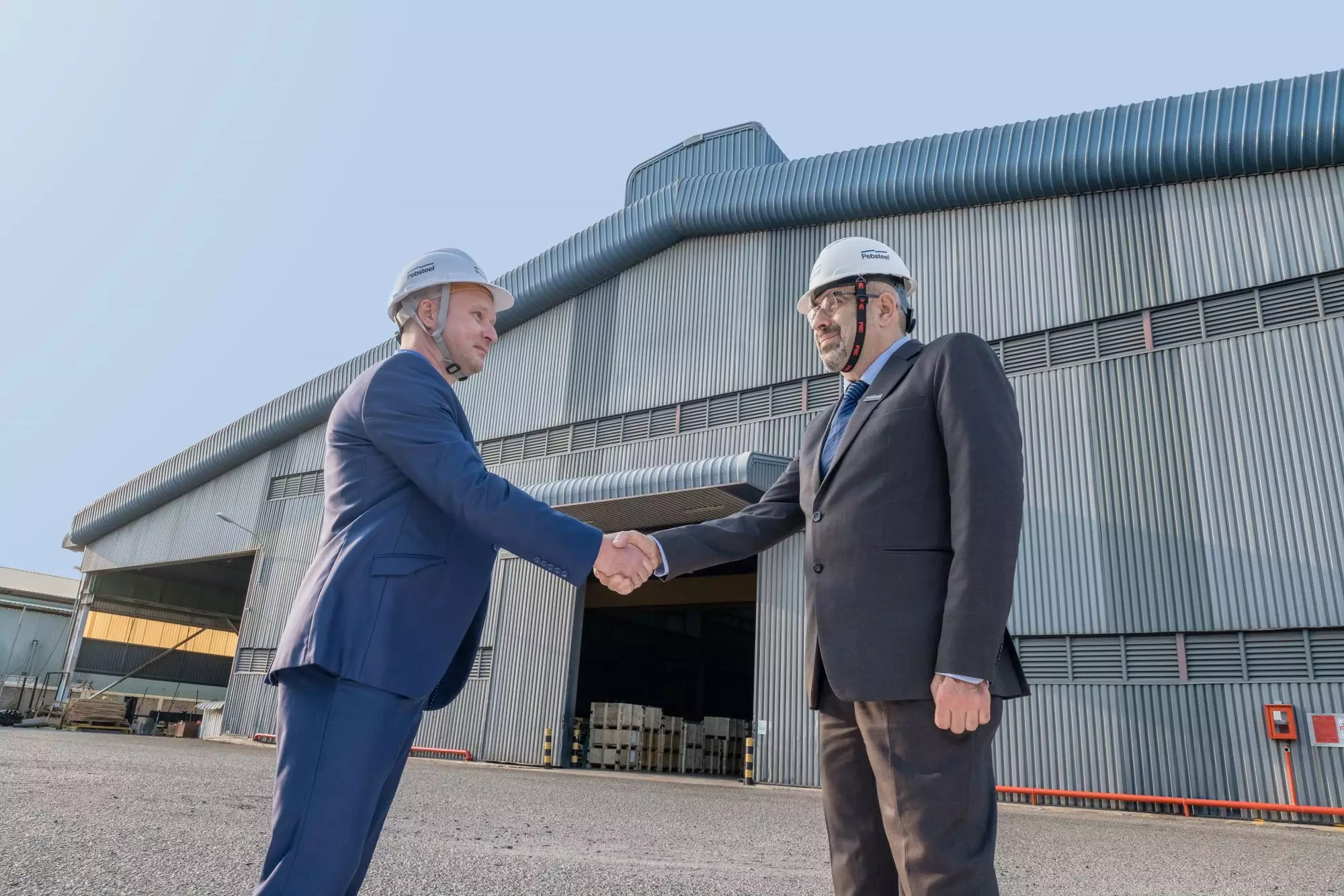
The contract drafted by Pebsteel is always guaranteed legality and separation of the cost of steel structure quotes with the consent of the customer.
Step 4: Building a technical drawing
A team of Pebsteel engineers and technicians with professional qualifications and practical experience began to carry out the construction of technical drawings according to the latest international standards.

Step 5: Fabricating
The fabricating process begins based on the completed technical drawing. Pebsteel owns a modern machinery line to ensure the processing of all kinds of components as required by the project.
Component processing stages at Pebsteel:
- Steel cutting
- Automatic welding
- Surface cleaning
- Surface Metal Spray
- Surface protection paint
- Galvanized, alloy-protected plating
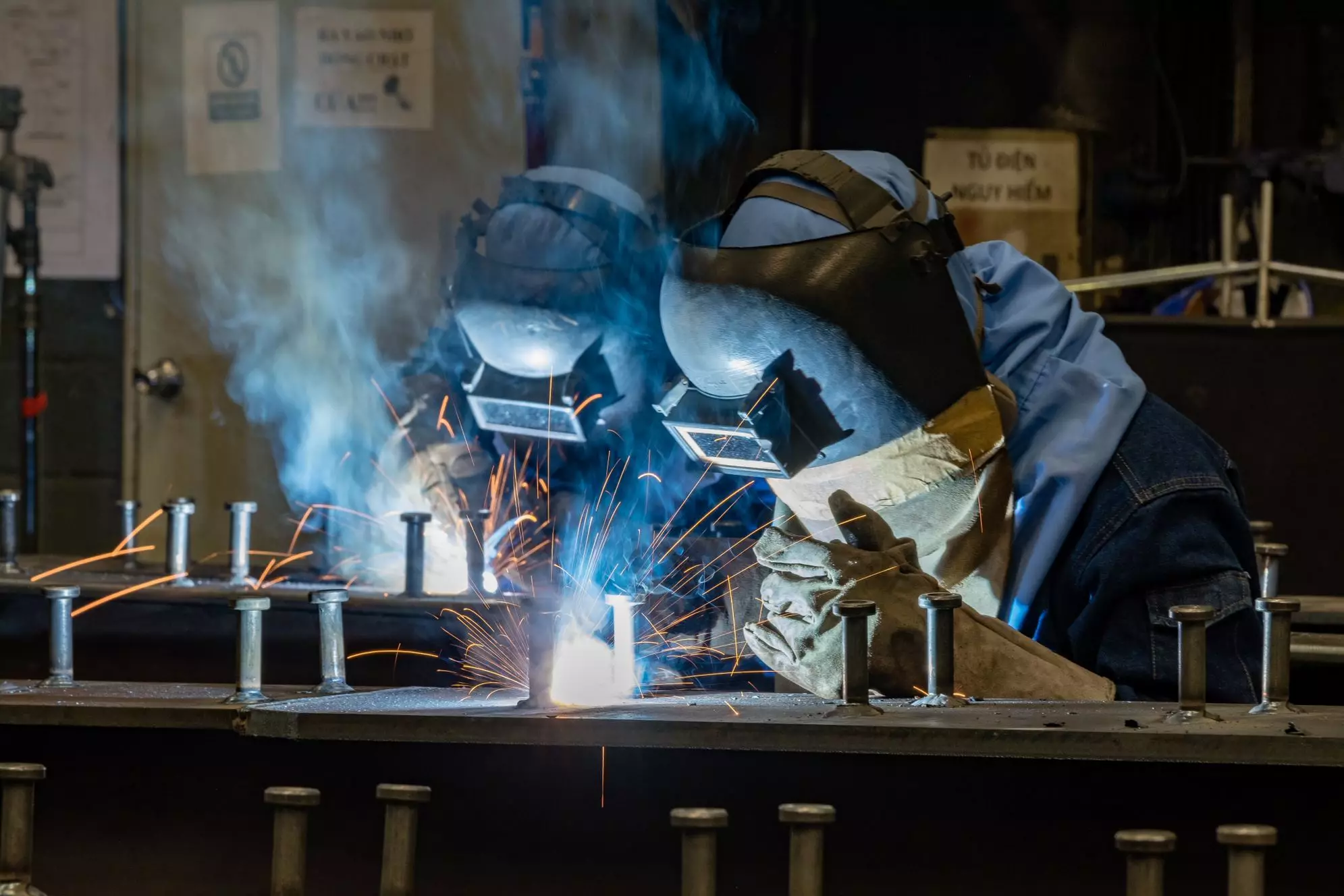
Step 6: Rapid and secure installation process
The fabricated components are carefully packed and transported to the construction for installation. The installation item is carried out by a team of skilled workers. All installation stages are closely supervised by the construction engineer to ensure the quality, schedule and safety of the project.
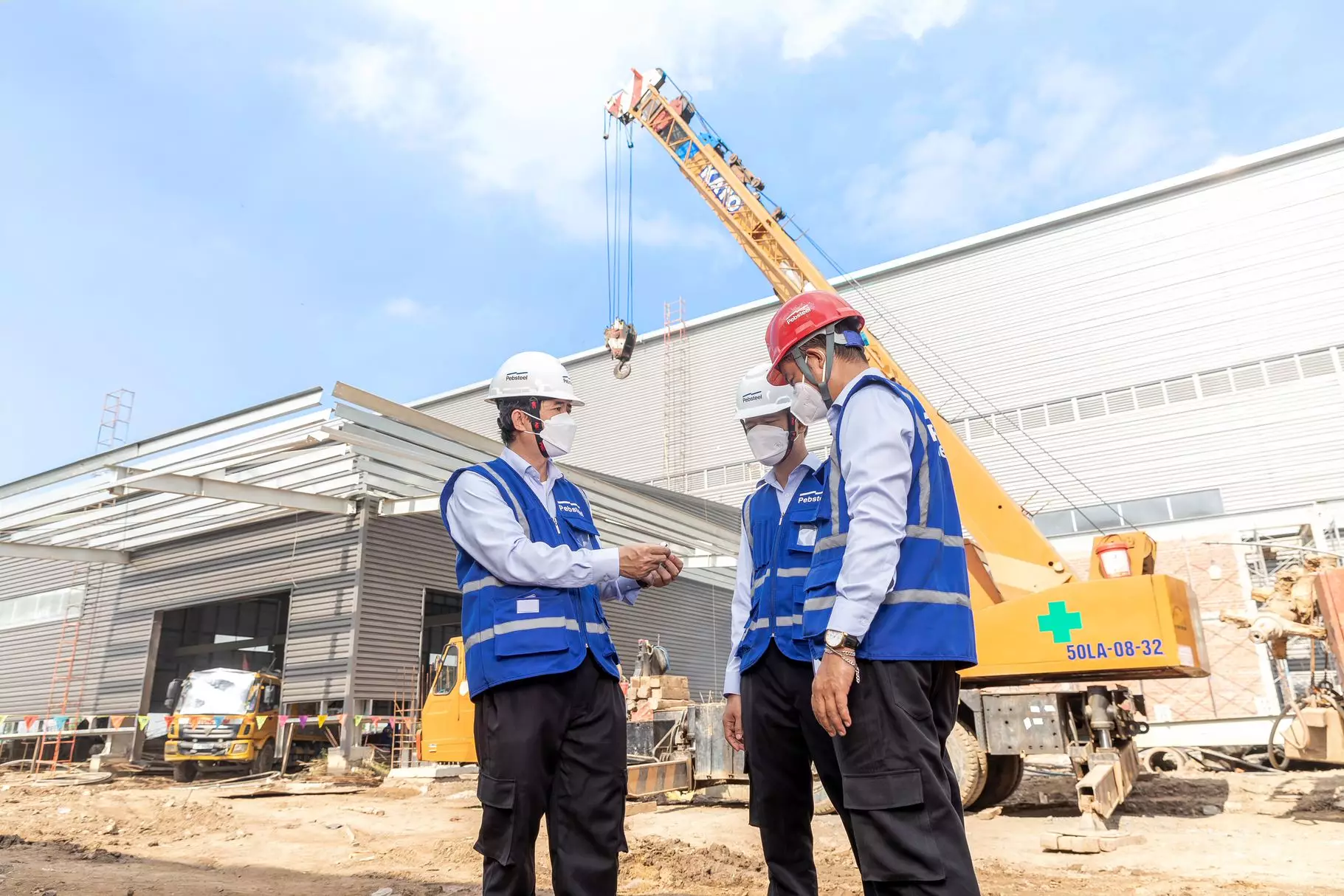
After the fabricating of the components are completed, the steel will be brought to the construction site for quick construction and ensure the
Step 7: Warranty
All steel structure construction projects carried out by Pebsteel are subject to a warranty policy. This is the privilege of benefits that Pebsteel gives to customers and partners. Accordingly, the warranty policy includes:
- 2 years for material warranty
- 3 years for anti-leak warranty
- 10 years for structural warranty
The warranty policy is developed and applied by Pebsteel to optimize the benefits of customers, increase the efficiency of use and extend the life of the steel building. Meanwhile, this is also a factor to affirming the service quality that Pebsteel provides.
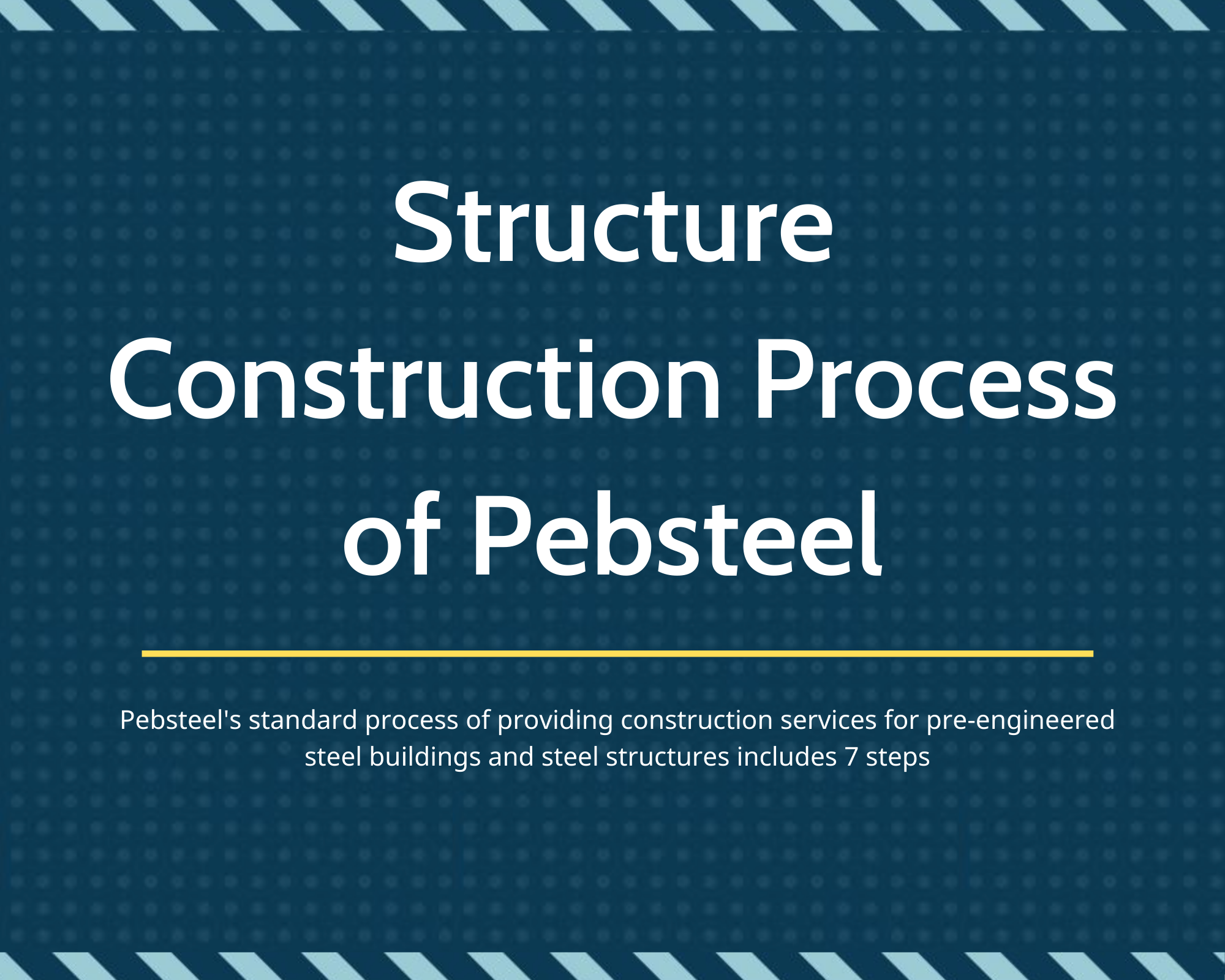
8. FAQ about Steel Structure?
A steel structure is a robust assembly of interconnected steel components designed to bear loads and provide rigidity. These reliable constructions use fewer raw materials compared to other types of structures.
The four main types of steel structures are basic building frame structures, portal frames, truss structures, and grid structures, each serving specific construction purposes and engineering requirements.
Steel buildings are made up of key elements: the steel framing, wall panels, and roof panels. The framing acts as the building’s skeleton, shaping and supporting it, while the wall and roof panels, crafted from steel sheeting, complete the structure.
Steel structures rely on principles of strength, stability, and flexibility, ensuring durability and safety in construction
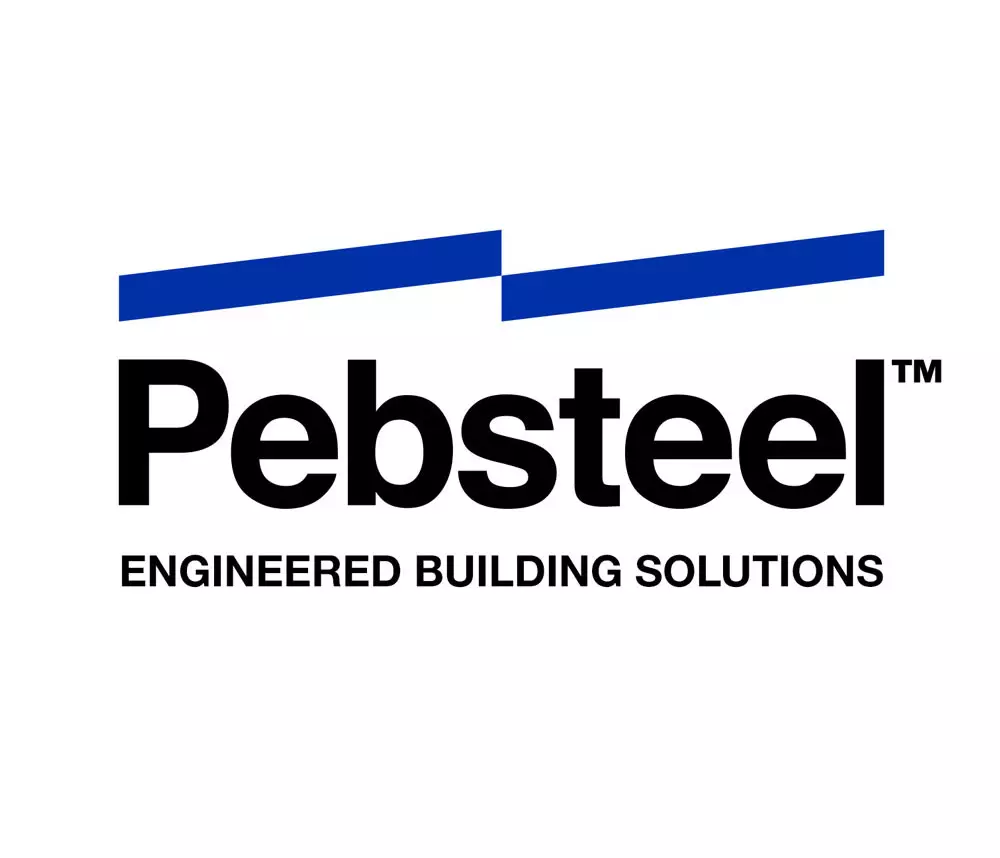
If you have questions that need to be answered, please contact us at the following email: marketing@pebsteel.com.vn
*** This article is intended to provide general information about the pre-engineered steel building and steel structure industry only. For further details or clarification based on your needs, please contact Pebsteel directly.






